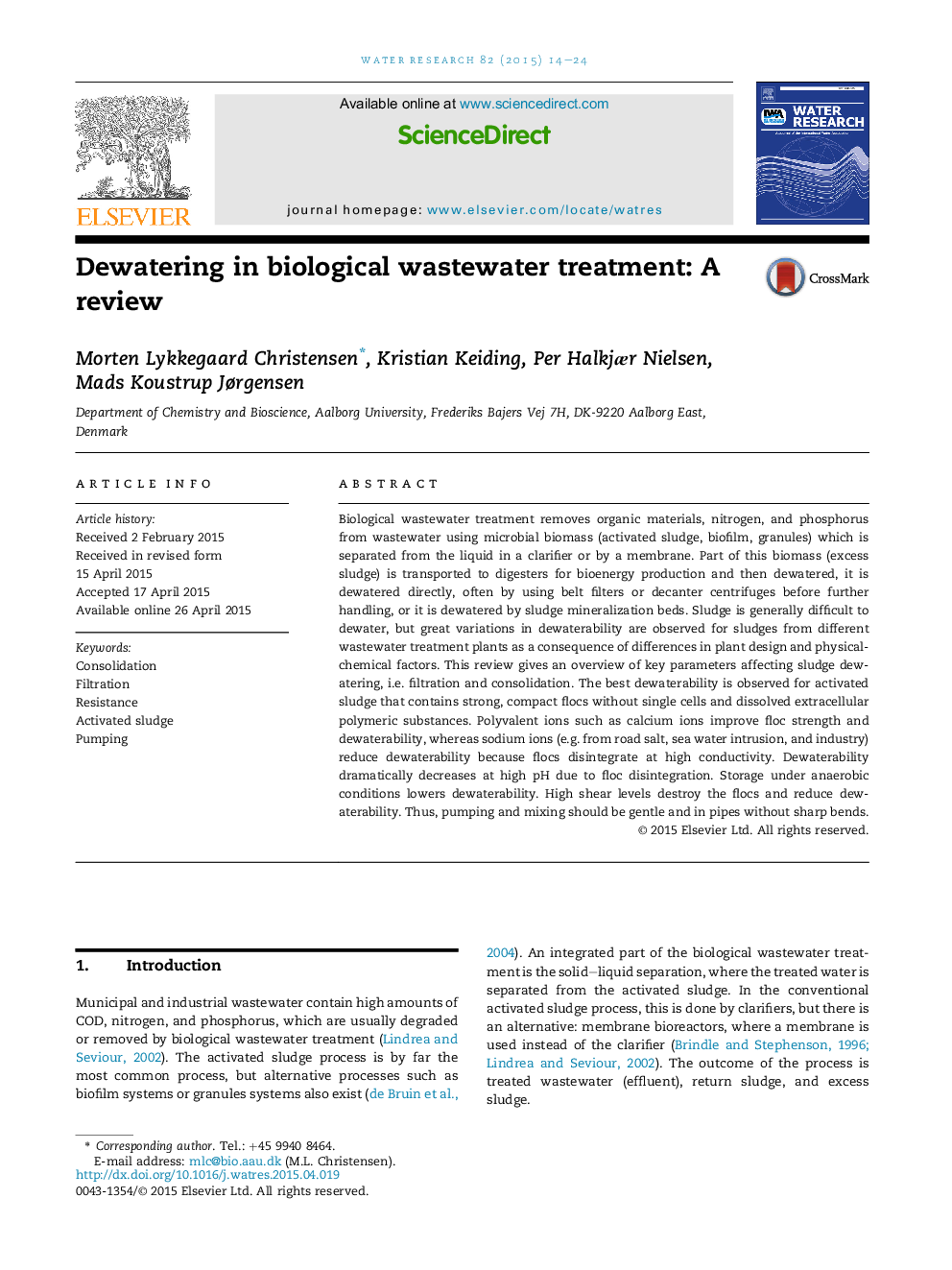| کد مقاله | کد نشریه | سال انتشار | مقاله انگلیسی | نسخه تمام متن |
|---|---|---|---|---|
| 4481054 | 1623086 | 2015 | 11 صفحه PDF | دانلود رایگان |
• Strong compact sludge flocs give the best dewaterability of biological sludge.
• Water hardness improves floc strength and sludge dewaterability.
• Variation in conductivity and pH reduce dewaterability due to flocs disintegration.
• Anaerobic storage lowers sludge dewaterability.
• Shear and pumping destroy flocs and reduce sludge dewaterability.
Biological wastewater treatment removes organic materials, nitrogen, and phosphorus from wastewater using microbial biomass (activated sludge, biofilm, granules) which is separated from the liquid in a clarifier or by a membrane. Part of this biomass (excess sludge) is transported to digesters for bioenergy production and then dewatered, it is dewatered directly, often by using belt filters or decanter centrifuges before further handling, or it is dewatered by sludge mineralization beds. Sludge is generally difficult to dewater, but great variations in dewaterability are observed for sludges from different wastewater treatment plants as a consequence of differences in plant design and physical-chemical factors. This review gives an overview of key parameters affecting sludge dewatering, i.e. filtration and consolidation. The best dewaterability is observed for activated sludge that contains strong, compact flocs without single cells and dissolved extracellular polymeric substances. Polyvalent ions such as calcium ions improve floc strength and dewaterability, whereas sodium ions (e.g. from road salt, sea water intrusion, and industry) reduce dewaterability because flocs disintegrate at high conductivity. Dewaterability dramatically decreases at high pH due to floc disintegration. Storage under anaerobic conditions lowers dewaterability. High shear levels destroy the flocs and reduce dewaterability. Thus, pumping and mixing should be gentle and in pipes without sharp bends.
Figure optionsDownload high-quality image (223 K)Download as PowerPoint slide
Journal: Water Research - Volume 82, 1 October 2015, Pages 14–24
